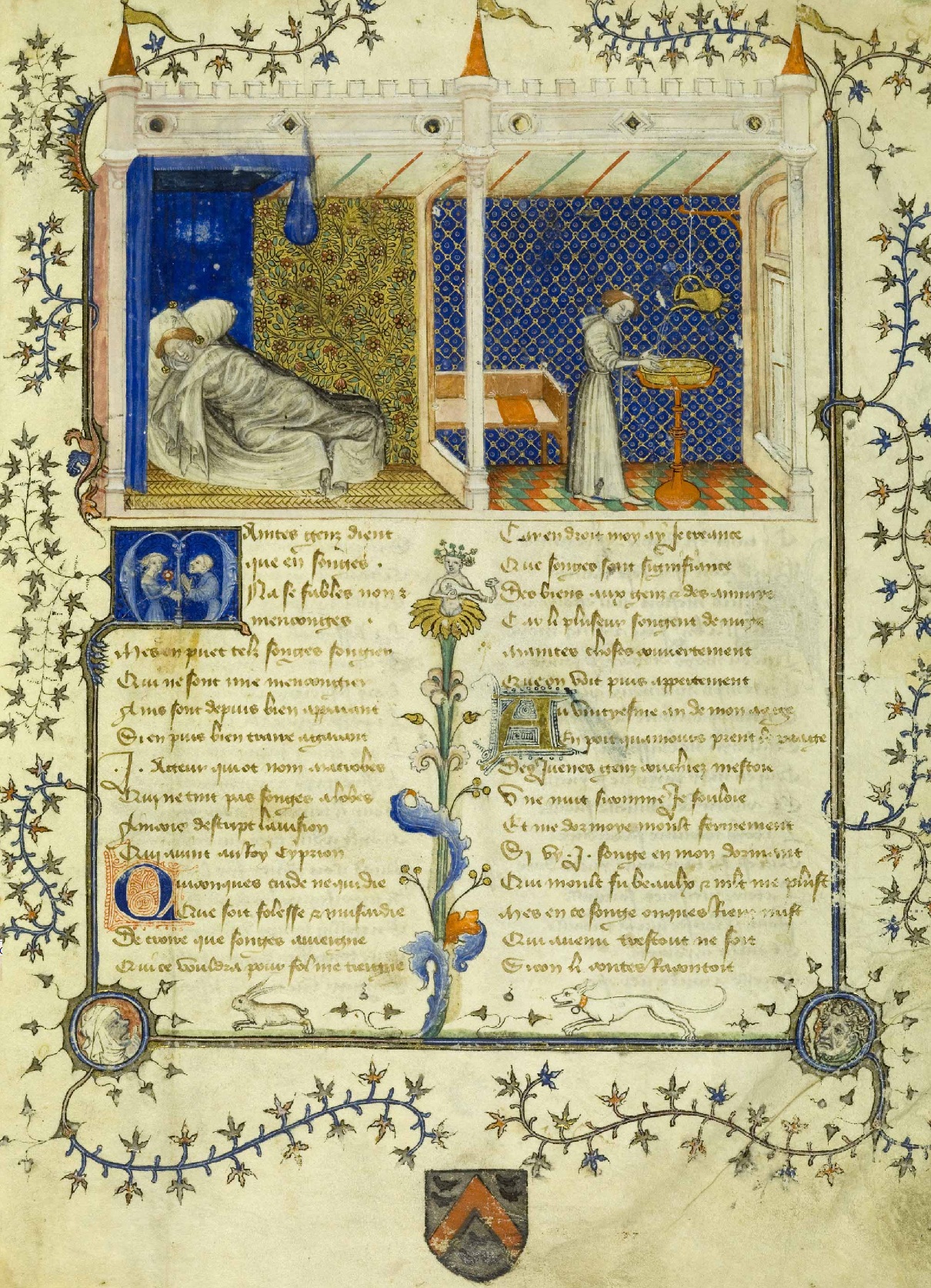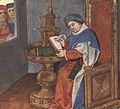
Roman de la Rose
Le Roman de la Rose (The Romance of the Rose) is a medieval poem written in Old French and presented as an allegorical dream vision. As poetry, The Romance of the Rose is a notable instance of courtly literature, purporting to provide a "mirror of love" in which the whole art of romantic love is disclosed. Its two authors conceived it as a psychological allegory; throughout the Lover's quest, the word Rose is used both as the name of the titular lady and as an abstract symbol of female sexuality. The names of the other characters function both as personal names and as metonyms illustrating the different factors that lead to and constitute a love affair. Its long-lasting influence is evident in the number of surviving manuscripts of the work, in the many translations and imitations it inspired, and in the praise and controversy it inspired.
For the poem by Jean Renart named Romans de la Rose in the manuscript, see Guillaume de Dole.The Romance of the Rose
Authorship[edit]
The Romance of the Rose was written in two stages by two authors. In the first stage of composition, circa 1230, Guillaume de Lorris wrote 4,058 verses describing a courtier's attempts at wooing his beloved woman. The first part of the poem's story is set in a walled garden, an example of a locus amoenus, a traditional literary topos in epic poetry and chivalric romance. Forty-five years later, circa 1275, in the second stage of composition, Jean de Meun or Jehan Clopinel wrote 17,724 additional lines, in which he expanded the roles of his predecessor's allegorical personages, such as Reason and Friend, and added new ones, such as Nature and Genius.[1] They, in encyclopedic breadth, discuss the philosophy of love.
Translation and influence[edit]
Part of the story was translated from its original Old French into Middle English as The Romaunt of the Rose, which had a great influence on English literature. Chaucer was familiar with the original French text, and a portion of the Middle English translation is thought to be his work. Critics suggest that the character of "La Vieille" acted as source material for Chaucer's Wife of Bath. There were several other early translations into languages including Middle Dutch (Heinrik van Aken, c. 1280). Il Fiore is a "reduction" of the poem into 232 Italian sonnets by a "ser Durante", sometimes thought to have been Dante, although this is generally thought unlikely. Dante never mentions the Roman, but is often said to have been highly conscious of it in his own work. In 1900, the pre-Raphaelite F. S. Ellis translated the whole of the poem into English verse, with the exception of a section describing a sexual encounter, which he included in an appendix in Old French with the note that he "believes that those who will read them will allow that he is justified in leaving them in the obscurity of the original".[12] C. S. Lewis's 1936 study The Allegory of Love renewed interest in the poem. In 2023, an opera inspired by the poem was premiered by American composer Kate Soper.[13]



